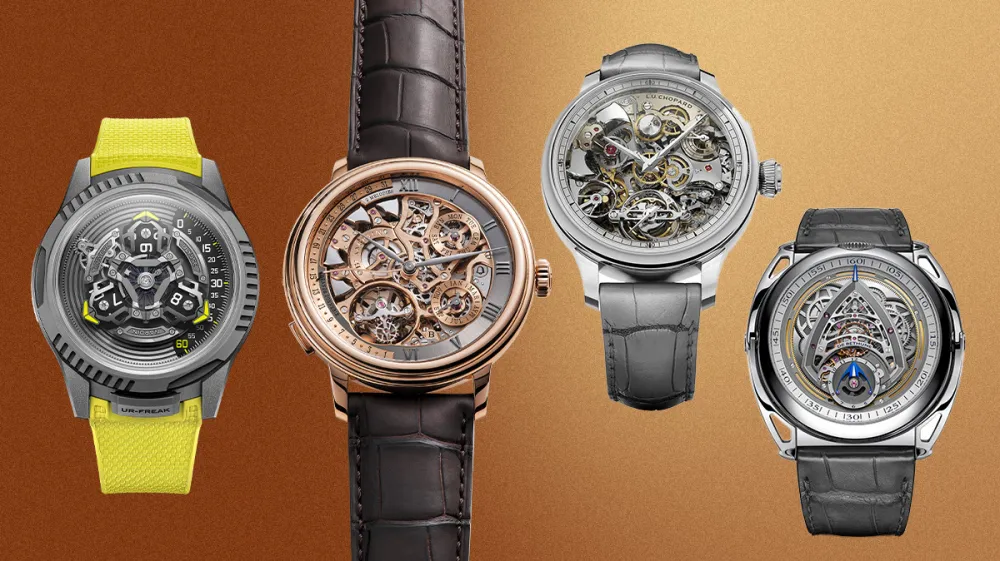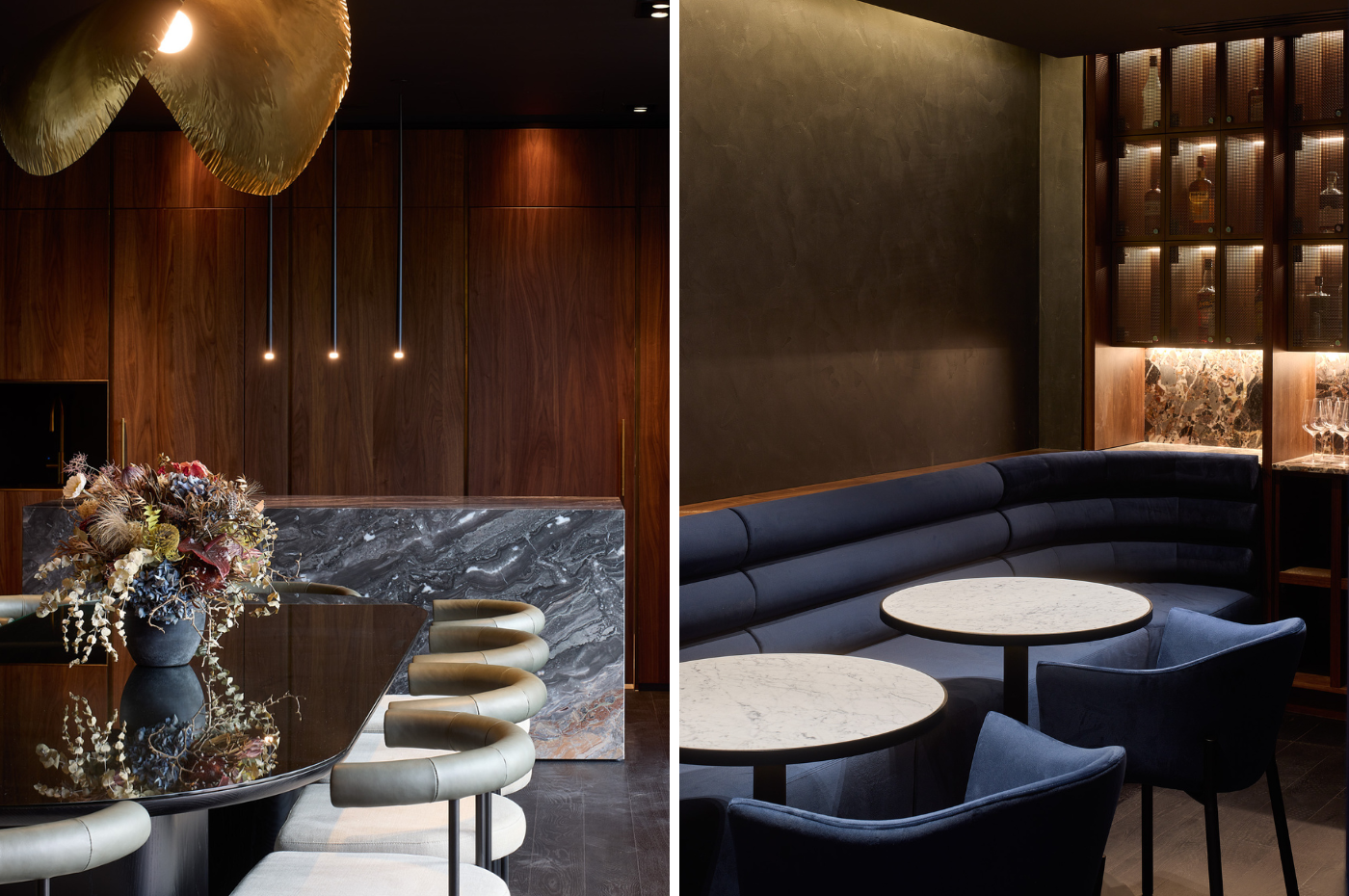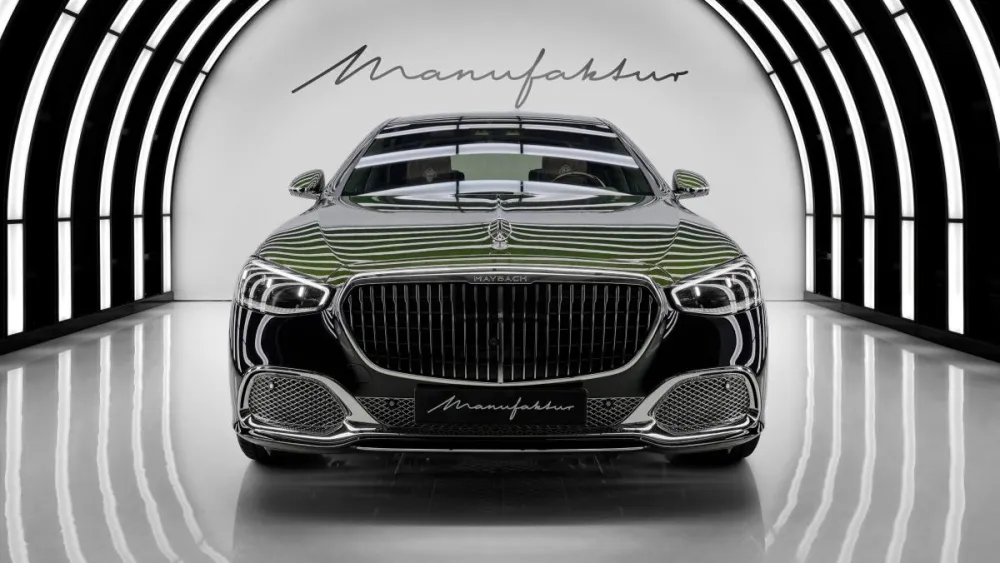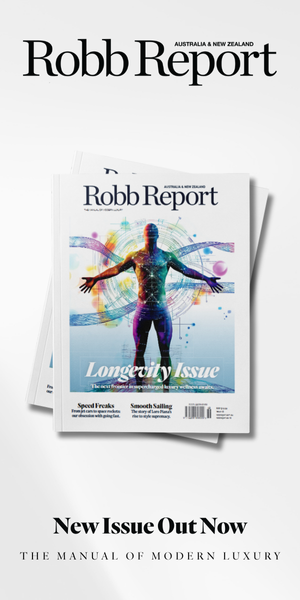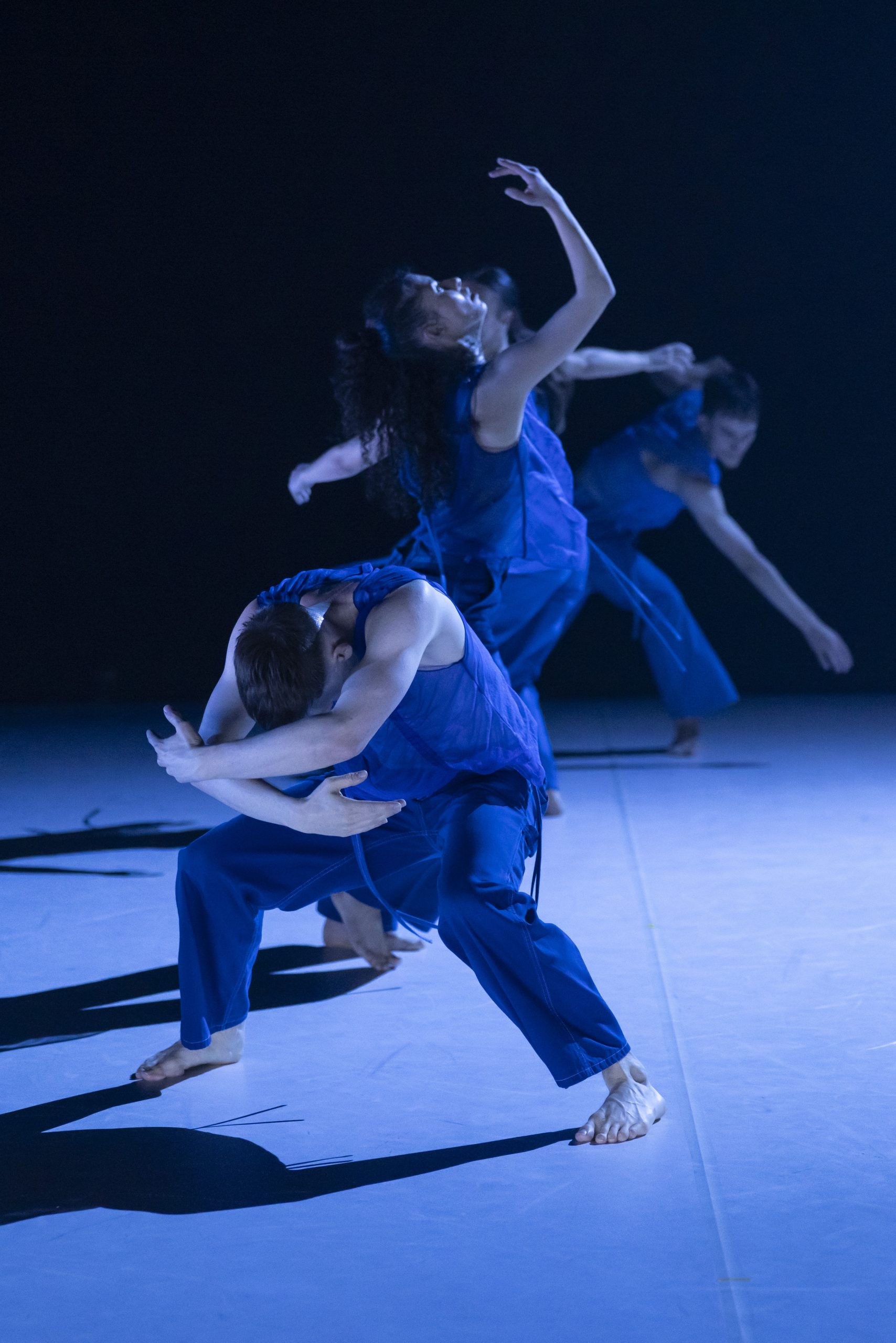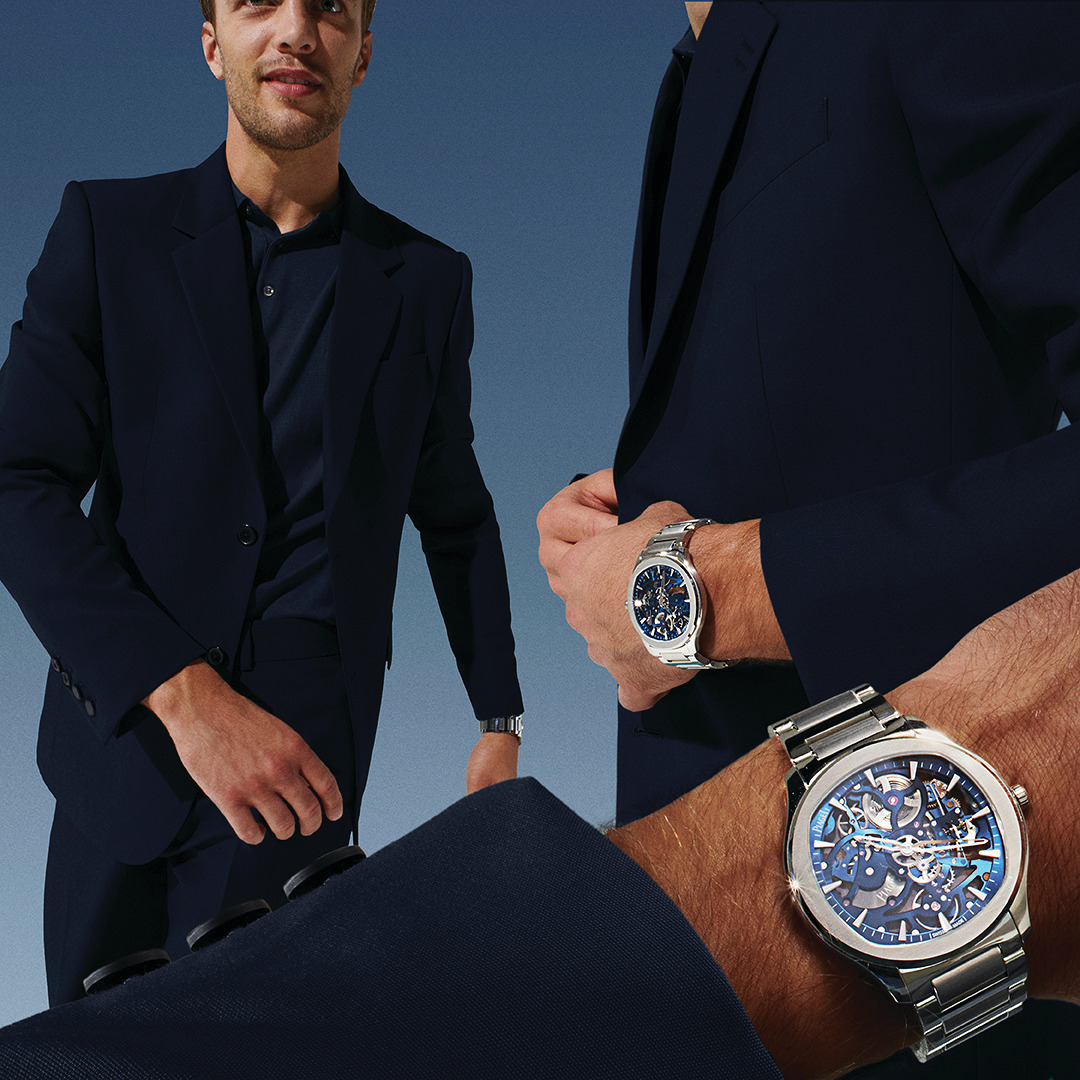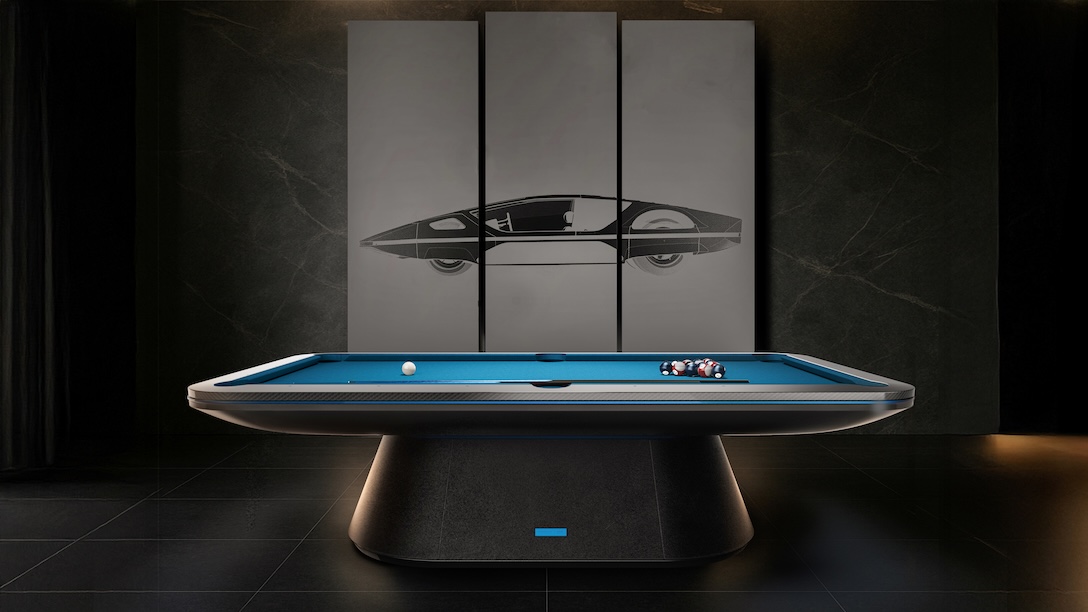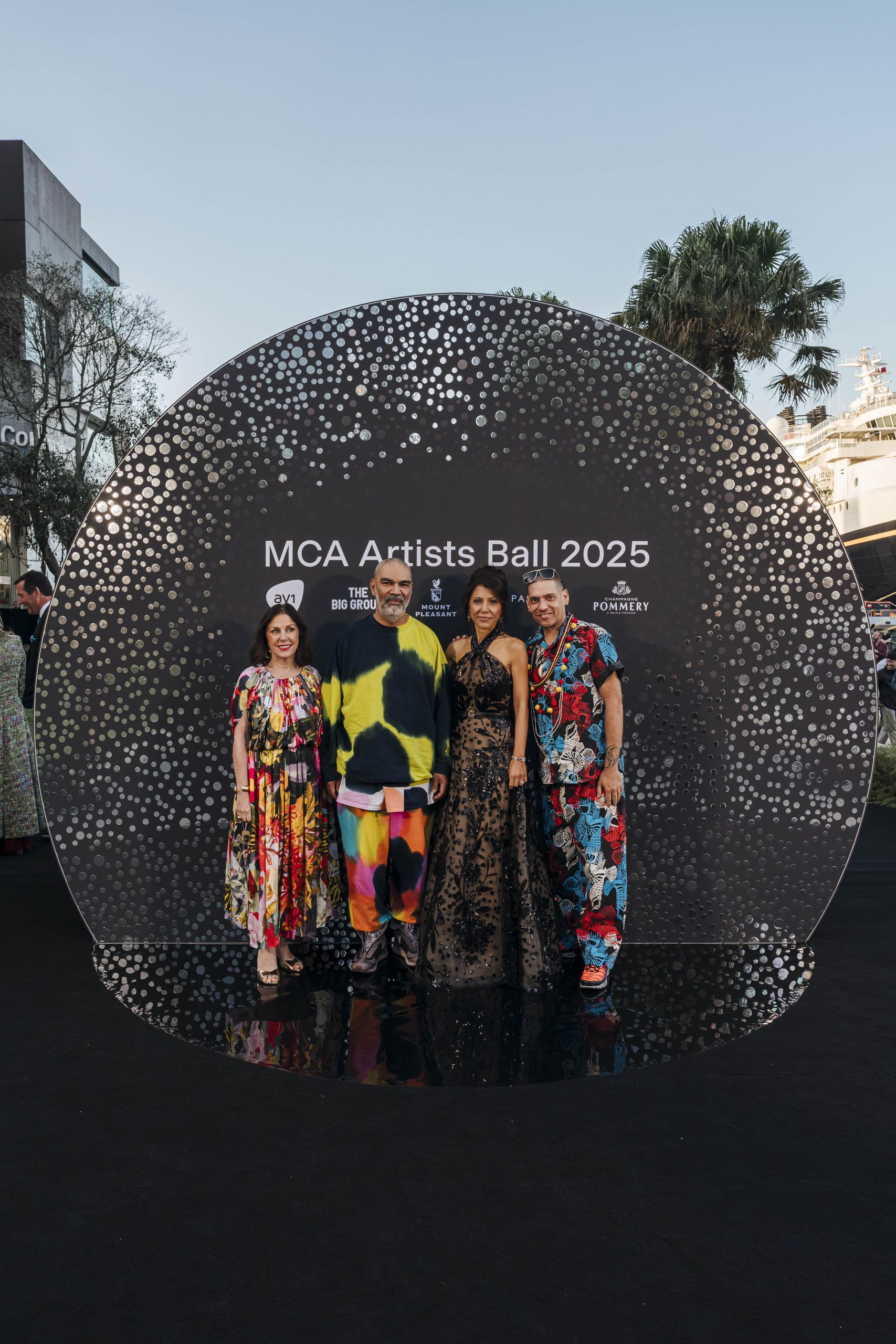
Lenny Kravitz’s Joy Ride
He has shaped the world of music for more than 35 years and has also become a sought-after designer. An in-depth interview with Lenny Kravitz on the eve of his Australian tour.
Related articles
Deep within the hills of Southern California’s Topanga Canyon, on an estate overlooking the Santa Monica Mountains where wind chimes ring softly in the breeze, Lenny Kravitz is explaining the concept of an opium bed to me. When he was living in New York in the late 1980s, working on his debut album, he didn’t have much bread, as he puts it—but he knew he wanted his home to be an artistic sanctuary, a place that could both hold and ignite his music.
It was the first time he began taking his creative instincts seriously. He decorated the columns of his SoHo loft with broken mirrors scavenged from the street and painted the walls to look like wallpaper. The one thing he did splurge on was the sleeping area, as central to the apartment’s energy as the birds, snakes and lizards that shared it with him. Kravitz, now 61, shows me a photo of a canopy bed with three raised sides—part porch, part psychedelic bus station.
“You’re supposed to lie down and smoke opium, because when you smoke, you fall out, right?” he says, his voice a mix of gravel and glitter, thin silver bracelets clinking softly as he gestures. “I never smoked opium, but I had this very international, bohemian-hippie vibe going on.”
That vibe led him to record Let Love Rule (1989), the album that launched more than three decades of Kravitz’s radical approach to music—and to life. In the years since, he’s become one of the most influential musicians of his generation, earning nine Grammy nominations and winning four—all for songs that have long since entered the cultural bloodstream: “American Woman”, “Fly Away”, “Again” and “Dig In”.
Even after all this time, his personal blend of rock, funk, soul and reggae still feeds off his singular visual aesthetic—and vice versa. In 2003, he turned that design fixation into a full-fledged second act, founding Kravitz Design. The two disciplines remain symbiotic. Mood boards are built to a soundtrack—lately, the Talking Heads—and every creative process begins with listening. “Just like music, we let the space tell us what to do,” he says. “I have to represent the client—and then give it my vibe.”

Kravitz on his 1947 Harley Davidson Knucklehead, built by Cycle Zombies. He wears an Outsider leather jacket and Engineer leather boots, both by Chrome Hearts, with his own leather pants.Pat Martin
Kravitz has felt an affinity for both music and design since childhood. His father bought him his first guitar when he was about 10, and he considers his earliest true design project to be his bedroom in Los Angeles, the city where the family decamped after years in a one-bed New York apartment. He laughs, recalling how thrilled he was to finally have room to breathe. “This house had a little yard and a pool and a view, and I was like, ‘Whoa,’” he says. “It was a sick example of a midcentury ranch-style house—glass, wood.”
He transformed his room into a proto-version of his future lofts—covered in graphic black-light posters of Jimi Hendrix and Led Zeppelin, strung with coloured bulbs. “It was the ’70s,” he says. “I just made this funky little set-up. I hung my lights and played my music, and I thought I was doing something.”
He was. That early sense of space and atmosphere would eventually evolve into Kravitz Design, which has since collaborated with Dom Pérignon, Leica and Rolex, and produced everything from furniture for CB2 to Kravitz Eyewear for Ray-Ban. “What I like about our company is that we don’t have a signature,” he says. “There are ties through things—comfort, elegance, soulfulness—but you just take on what feels interesting.”
When we meet, Kravitz has just arrived in Los Angeles after a weeklong residency in Las Vegas, where his reputation as the epitome of cool remains unshaken. “Kravitz is the rare demo of 60-plus individuals who can rock leather pants in public,” read one review. He’s still touring regularly—most recently for Blue Electric Light, his latest album—and admits that the Vegas heat, at 46 Celsius, kept him largely indoors. “I was just listening to music, reading, watching films,” he says. One day, he hosted friends for an impromptu Spike Lee marathon: Malcolm X and Mo’ Better Blues—both starring his friend Denzel Washington—plus Jungle Fever.
Earlier in 2025, Kravitz set off on a three-month, multi-country European tour. After this brief SoCal respite, he played half a dozen festivals in the US, then, as this issue of Robb Report was going go press, toured Australia and New Zealand. It would be a crazy schedule for most, but for Kravitz, that kind of breakneck pace is his default mode.

Kravitz pairs a Jaeger-LeCoultre Reverso Tribute Monoface Small Seconds watch with a pink-gold case and a military jacket his father wore while reporting in Vietnam during the war.Pat Martin
Travel seems to feed his soul as much as music and design do: being in motion, delving into cultures and communities and food and experiences, soaking up everything on offer make him feel grounded. Especially because he tends to find kinship wherever he goes. “I have friends and acquaintances in different places,” he says, “so that makes it feel more like home, that you can go by somebody’s house and have a home-cooked meal and good conversation.”
He was bitten by the travel bug early. As an adolescent, he had a summer job in Nigeria assisting a stage manager booking American artists such as Shalamar and Lakeside. Today, there are certain places that still have the power to snag his heart, like South America, where he says the people “are there to take in the music, to really experience it, to participate. It’s very intense there, [and] it’s really refreshing for artists to receive that kind of energy and that kind of love.”
When he’s not touring, Kravitz splits his time between three homes. His Paris residence, in the 16th arrondissement on the Right Bank, is probably the most personal. The decor features an eclectic mix of items from modernist designers he admires (Milo Baughman, Guido Faleschini), furniture from Kravitz Design’s Africa-inflected collaboration with CB2, and objects and collectibles from his life (those aforementioned Grammys, Muhammad Ali’s boots). It also functions as a base of sorts for him and his daughter, actor and filmmaker Zoë Kravitz, both of them often travelling to the city for various creative projects. “I’ve been working on it for many years,” he says. “It’s always evolving, it’s always moving.”

Photographed in L.A.’s Laurel Canyon, Kravitz wears his own vintage denim jacket from Church Boutique, Celine jeans, and Yves Saint Laurent boots.Pat Martin
But the Bahamas is where he spends most of his days, cooking and tending to his garden: mangos, soursop, sugar apples, papaya, guava, passion fruit, kale, okra. (Kravitz also owns a ranch in Brazil, though he says he doesn’t get there as often as he would like.) He grew up visiting Nassau, the Bahamian capital, twice a year, but he did not step foot on Eleuthera, one of the other islands, until he was an adult. He and his then-wife Lisa Bonet had to ride the mail boat to get there, squeezed in alongside nappies and groceries and tyres. He recounts the journey with the acuity of a moment right before everything changes—the 90 km trip took about five hours, and the $35 fare included a sandwich and a drink. When he drank in the splendour around him, he decided to stay. “The day I arrived there, I knew it was my home,” he says.
Kravitz is a man-about-island, just a regular neighbour and resident, who will pop in and visit friends at work, who responds to “Travis”, a mispronunciation of his last name. One day, he was talking to a pal suffering from a toothache; Kravitz watched as the man poured black pepper into a hole in his tooth and sealed it with cardboard from a matchbox. Soon after, Kravitz began hosting an annual dental-care clinic, completely free of charge for the island’s inhabitants. “People get taken out of their pain and misery, people who have been hiding because they have nothing in their mouth, or don’t feel attractive, or don’t feel themselves—all of it,” he says. “There are still a lot of folks who need to be served, but it’s working, and it brings so much joy.”
“I have friends and acquaintances in different places, so that makes it feel more like home, that you can go by somebody’s house and have a home-cooked meal and good conversation.”

Lenny, Familiar Corner, 2025, oil on canvas by Peter Uka Courtesy of the Artist and Mariane Ibrahim; Painting Photographed by Kai Schmidt
During his Vegas shows, Kravitz ended each night playing the title track from his first album, repeating the three words “let love rule” like a mantra while walking through his audience, before he vanished into a cloud of confetti. And considering the varied richness of his pursuits, there may be no better motto. Kravitz is a paragon of pursuing joy wherever it leads. His artistry is in living a fulfilled life. “If we put love and God in what we’re doing, people should feel and see the fruits,” he says. “It’s far better to show love through your actions than to speak about it.”
That unshakable trust in the forces outside himself is his channel into his art, something he has believed in his entire career. Kravitz chills in a sprawled-out rock-star posture, his back slid halfway down a reclining chair and his legs splayed out wide. I ask about one of his tattoos, a cross made of arrows pointing in the cardinal directions. He says he’d been drawing on a paper plate while in the studio for 1993’s Are You Gonna Go My Way album and it just came to him. “I didn’t know what I was drawing it for, but honestly, I thought, ‘Oh, this would make a nice tattoo,’” he says, noting that it represents Christ’s consciousness in all directions.
The son of Jewish television-news producer Sy Kravitz and Black actress Roxie Roker, who was of Bahamian descent, Kravitz grew up with both Christian and Jewish traditions. Though he doesn’t identify with a particular organised religion today, his language is steeped in spirituality. “Quincy Jones put it in a very eloquent way: you just want to be ready when God walks in the room, to capture what you’re being given,” says Kravitz. Ideas, he tells me, flit through space, and his job is to be an antenna, to capture them. “I’m trying to pick up on what’s floating out there. It’s given to me, and my job is to make it happen. I’ll play all the instruments, do what I have to do. But it came from somewhere else. Didn’t come from me.”

Kravitz tunes an acoustic guitar in the attic of The Record Room in Laurel Canyon.Pat Martin
Though he hasn’t made Southern California his home since his youth, he still looks every part the Angeleno, wearing a ripped burgundy thin-mesh shirt and frayed jeans and with a few of his waist-length locs tied in a knot behind his head. His signature sunglasses—today, it’s a pair of thick wraparound lenses—shield him from the high sun. Kravitz’s family moved to LA after his mother landed a role on the groundbreaking TV series The Jeffersons (playing half of prime time’s first interracial couple). “I grew up around a lot of very hardworking, humble people, who had a lot of integrity, so it was all about respect, hard work,” he says. He lists Roker as an example, because her career didn’t take off until she was older, she knew who she was, was more sure of herself, her values were in place. “As a teenager, I thought she should be doing more, having more. ‘Why are we cleaning the house?’ And she’d say, ‘Because it’s our house. We have to be responsible for it.’”
In New York, Kravitz had shuttled between his parents’ apartment on Manhattan’s predominantly white Upper East Side and his maternal grandparents’ home in working-class Bedford-Stuyvesant, Brooklyn, as well as his paternal grandparents’ place in the borough’s Sheepshead Bay, which had a significant Jewish population. The clash among the neighbourhoods mirrored his internal strife over his bi-racial identity. And while anyone growing up in 1970s-era New York City was exposed to new types of art and style and fashion, Kravitz’s unconventional upbringing—surrounded by leading figures of the creative set—gave him a front-row seat to that cultural flowering. His godmothers included actresses Diahann Carroll and Cicely Tyson, both good friends of his mother. Kravitz remembers going to the home Tyson shared with her husband Miles Davis and being entranced by the jazz legend’s closet. “It was full of reptile skins and suede and bright colours,” he says. “Everything was so rich and fun.”
Kravitz knows how to have a good time but also how to accommodate it—one of his pieces for CB2 is a sofa with an extra-low armrest, perfect for propping your arm up while chatting at a get-together. “It’s very much a sofa made for a party house, but also very liveable,” Sara Khodja, a senior director at CB2, tells me. “When I think about the collection itself, and the point of view that he brought to it, I’m like, ‘Oh, yeah. Only a rock star would do this.’”

The 61-year-old Kravitz looks ageless in his own Balenciaga sweatpants, his dad’s old military jacket, and sunglasses he designed for Kravitz Eyewear.Pat Martin
Kravitz realised he wanted to be a musician at an early age—a Jackson 5 concert at Madison Square Garden when he was about 5 years old solidified that goal for him. But in LA, he discovered the kind of music he wanted to play: rock, like Led Zeppelin and The Rolling Stones. He also discovered weed around the same time, at age 11: “I’ve heard so many people say, ‘Really?’” he says with a laugh. “I’m like, ‘Yeah.’ It’s 1975, so it’s all skateboarding and surfing and rock music and weed—all my friends’ parents were hippies!” After high school, he started playing music wherever he could get booked. “I remember playing the Stone Pony in New Jersey—Bruce Springsteen came down to see me,” he says. “That actually was my first picture in Rolling Stone: It’s a picture with Bruce in ‘Random Notes’.”
In 1985, Kravitz met Lisa Bonet, a star of The Cosby Show, backstage at a concert. They bonded over their similar half-Black, half-Jewish backgrounds and married in 1987. Their daughter, Zoë, was born the following year. (The couple divorced in 1993 but remain close friends.) At first, Bonet was the more famous of the pair. Critics and record companies were initially unwilling to expand their ideas about what a rocker looked like, but in 1989, Kravitz was booked as the opening act on three separate tours—Tom Petty and the Heartbreakers, David Bowie and Bob Dylan—and Virgin Records released his debut album. Kravitz credits that hard-won success to his strong gut. Long since becoming the headliner, he is still happy to wait out the good in anticipation of the perfect, and for him, perfection means the ability to express something that is deeply personal. “As much as I love what somebody else did, I don’t want somebody else’s. I want mine,” he says. “Even if I really love theirs, I only want what God has for me.”
In the hopes of passing along some of his wisdom, he frequently works with up-and-coming rock musicians, like De’Wayne and Youngblud, though he’s still getting used to the role of mentor. He doesn’t feel old. “I feel like I’ve been here and done a lot, and at the same time I feel like I just got here and haven’t done much,” he says, grinning. “Time is very mysterious.”

Pat Martin
“As much as I love what somebody else did, I don’t want somebody else’s. I want mine.”
The years, though, have changed his attachment to material objects. The historic gems that fill his Paris home are enough; his appetite is sated. “I’m done with all that now,” he says. “I’m not acquiring anything else. I’m downsizing and making things simpler. It takes work and a lot of attention keeping up with things.” The intangible is more appealing: riding on horseback to a waterfall on his Brazil estate; turning down his favourite street in Paris and encountering the Palais Garnier, a building he never gets sick of seeing; going for a walk through nature and a tree dropping a piece of fruit in his path. Being awake to these moments has kept Kravitz the man he has always tried to be: a creator, with the agency to transmit the message he wants the world to receive. “Success is just doing the work. It’s making the art,” he says. “You can have all kinds of things and be miserable. These things—we can’t take them with us. They should not define us. You’re defined by who you are.”
From 18 to 29 November, Kravitz and his powerhouse band will light up stages in Sydney, Newcastle, Brisbane, Melbourne and a special regional show in Mildura. For tickets, visit Ticketek
Stylist: Rodney Burns for Church Boutique
Grooming: Shelley Legrand
Photo assistant: Mariana Vernet
Digi tech: Neal Handloser
Photo director: Irene Opezzo
Production assistant: Luca Ceccarelli
Subscribe to the Newsletter
Recommended for you
These Elegant, Classic Accessories Can Be Worn Year After Year
Invest once, wear forever—these sleek classics, from watches and bags to footwear, make a lasting impression.
By Paige Reddinger, Naomi Rougeau, Alex Badia
December 3, 2025
The 18 Coolest New Watches That Dropped in November
Blancpain, De Bethune, Vacheron Constantin and 11 other watchmakers debuted stylish new wristwatches this month.
December 3, 2025
You may also like.
You may also like.
Radek Sali’s Wellspring of Youth
The wellness entrepreneur on why longevity isn’t a luxury—yet—and how the science of living well became Australia’s next great export.
Australian wellness pioneer Radek Sali is bringing his bold vision for longevity and human performance to the Gold Coast this weekend with Wanderlust Wellspring—a two-day summit running 25-26 October 2025 at the RACV Royal Pines Resort in Benowa. Sali, former CEO of Swisse and now co-founder of the event and investment firm Light Warrior, has long been at the intersection of wellness, business and conscious purpose.
Wellspring promises a packed agenda of global thought leaders in biohacking and longevity, including Sydney-born Harvard researcher David Sinclair, resilience pioneer Wim Hof, performance innovator Dave Asprey and muscle-health expert Gabrielle Lyon. From immersive workshops to diagnostics, tech showcases, and movement classes, Sali aims to make longevity less a niche pursuit for the elite and more an accessible cultural shift for all. Robb Report ANZ recently interviewed him for our Longevity feature. Here is an edited version of the conversation.
You’ve helped bring Wellspring to life at a moment when longevity seems to be dominating the cultural conversation. What drew you personally to this space?
I’ve always been passionate about wellness, and the language and refinement around how we achieve it are improving every day. Twenty years ago, when I was CEO of Swisse, a conference like this wouldn’t have had traction. Today, people’s interest in health and their thirst for knowledge continue to expand. What excites me is that wellness has moved into the realm of entertainment—people want to feel better, and that’s something I’ve always been happy to deliver.
There are wellness retreats, biohacking clinics, medical conferences everywhere. What makes Wellspring different?
Accessibility. A wellness retreat can be exclusive, but Wellspring democratises the experience. Tickets start at just $79, with options up to $1,800 for a platinum weekend pass. That means anyone can learn from the latest thought leaders. Too often in this space, barriers are put up that limit who can benefit from the science of biohacking. We want Wellspring to be for everyone.
You’re not just an organiser, but also an investor and participant in this field. How do you reconcile passion with commercial opportunity?
Any investment I make has to have purpose. Helping people optimise their health has driven me for two decades. It’s satisfying not just as an investor but as an operator—it builds wonderful culture within organisations and makes a real difference to people’s lives. That’s the natural fit for me, and something I want to keep refining.
What signals do you look for in longevity ventures to separate lasting impact from passing fads?
A lot of what we’re seeing now are actually old ideas resurfacing, supported by deeper scientific research. My father was one of the first in conventional medicine to talk about diet causing disease and meditation supporting mental health back in the 1970s. He was dismissed at first, but decades later, his work was validated. That experience taught me to look for evidence-based practices that endure. Today, we’re at a point where great scientists and doctors can headline events like Wellspring—that’s a huge cultural shift.

Longevity now carries a certain cultural cachet—its own insider language and status markers. How important is that to moving the field forward?
Health is our most precious asset, and people have always boasted about their routines—whether it’s going to the gym, doing a detox, or training for a marathon. What’s different now is that longevity practices are gaining mainstream recognition. I see it as something to be proud of, and I want to democratise access so everyone can ride the biohacking wave.
But some argue that for the ultra-wealthy, peak health has become a kind of luxury asset—like a private jet or a competitive edge.
That’s short-sighted. Yes, there are extremes, but most biohacking methods are accessible and inexpensive. Look at the blue zones—their lifestyle practices aren’t costly, yet they lead to long, healthy lives. That’s essential knowledge we should be sharing widely, and Wellspring is designed to do that in an engaging way.
Community is often cited as a key factor in healthspan. How does Wellspring foster that?
Community is at the heart of it. Just as Okinawa thrives on social connection, we want Wellspring to be a regular gathering place where people uplift each other. Ideally, it would become as busy as a Live Nation schedule—but for health and wellness.
Do you worry longevity could deepen class divides?
Class divides exist, and health isn’t immune. But in Australia, we’re fortunate—democracy and a strong equalisation process help maintain quality of life for most. Proactive healthcare, like supplementation and lifestyle changes, isn’t expensive. In fact, it’s cheaper than a daily coffee. That’s why we’re one of the top five longest-living nations. The opportunity is to keep improving by making proactive health accessible to everyone.
Some longevity ventures are described as “hedge-fund moonshots.” Others, like Wellspring, seem grounded in time-tested approaches. Where do you stand?
There’s value in both, but I’m more interested in sensible, sustainable practices. Things like exercise, meditation, and community-driven activities are proven to extend life and improve wellbeing. Technology can support this, but we can’t lose sight of the human elements—connection, balance, and purpose.
Finally, what role can Australia—and Wellspring—play in shaping the global longevity conversation?
The fact that we can put on an event like Wellspring, attract world-leading talent, and already have commitments for future years says a lot. Australia is far away, but that hasn’t stopped great scientists and thinkers from coming. We’ll be here every year, contributing to the global conversation and, hopefully, helping more people extend their healthspan.
You may also like.
‘Continuum’ Opens to Rave Applause at Sydney Dance Company
Rafael Bonachela’s latest curatorial triumph premiered last night at the Roslyn Packer Theatre, dazzling audiences with its emotional range and fearless physicality.
Sydney Dance Company opened its latest season with Continuum, a triple bill that reminds audiences why the ensemble remains Australia’s most compelling cultural export. Receiving a standing ovation at its premiere last night at the Roslyn Packer Theatre, the program unfolds as an elegant meditation on movement and metamorphosis—three distinct choreographic visions held together by Rafael Bonachela’s curatorial precision and instinct for contrast.
Stephen Page’s Unungkati Yantatja – one with the other breathes land, sea, and sky into motion; Tra Mi Dinh’s Somewhere between ten and fourteen lingers in the tender light between day and night; and Bonachela’s own world-premiere Spell delivers the evening’s visceral heartbeat. Together they trace the continuum of life itself—fluid, volatile, and impossible to pin down. Running through 1 November, the production affirms Bonachela’s vision of dance as “an ever-evolving conversation between artists, audiences, and the world around them.” Robb Report ANZ recently caught up with Bonachela.
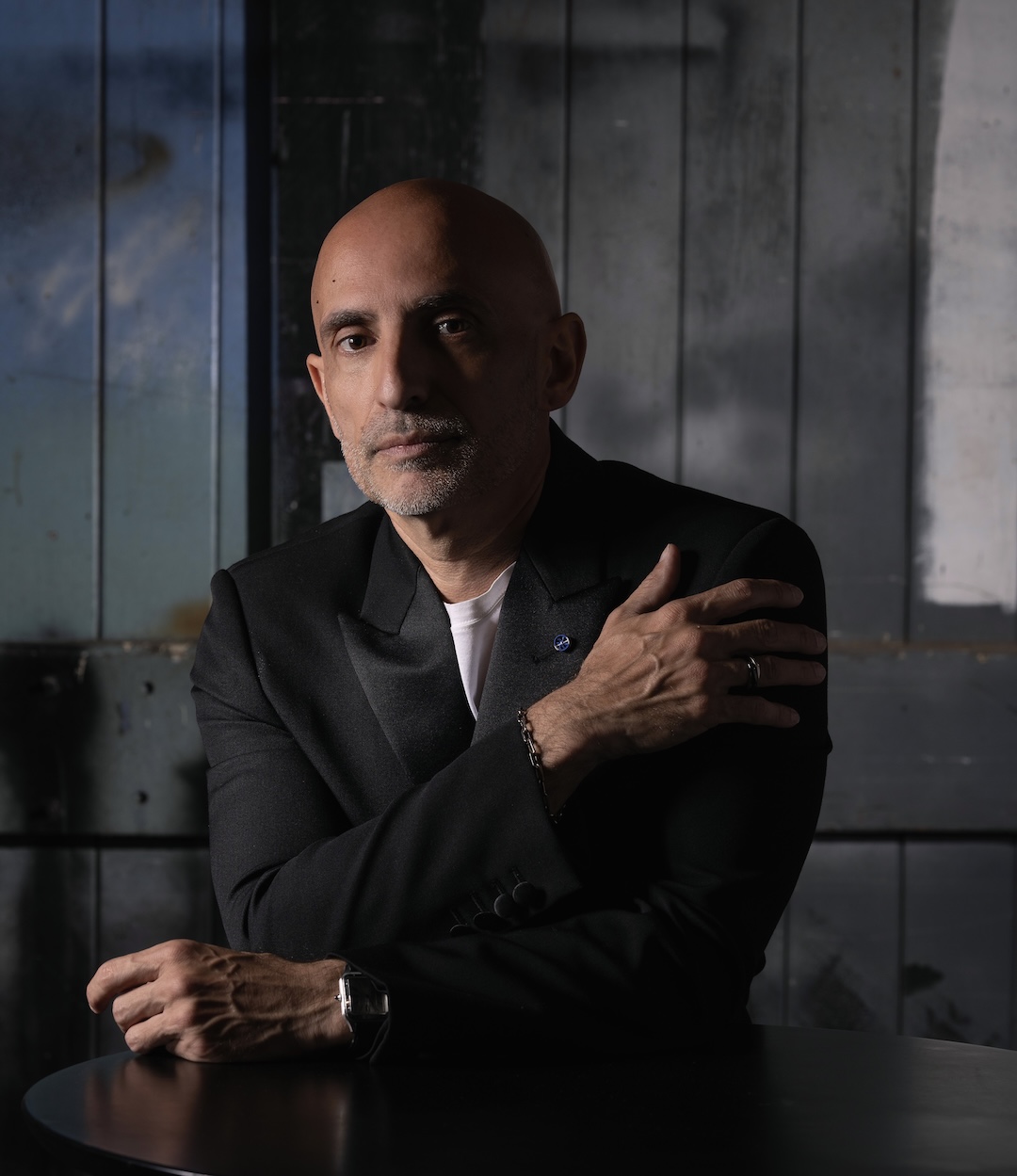
Continuum is described as “a bold exploration of the ever-shifting cadence that binds us to the world.” How did this idea of constant transformation influence your choreographic choices in Continuum?
I’ve curated this evening as an invitation for audiences to experience dance as an ever-evolving conversation—between past and present, between the individual and the collective, and between diverse artistic voices. My intention with this program is to spark connection, curiosity, and reflection, offering works that challenge, move, and inspire while revealing the transformative power of the body in motion.
Each choreographer brings a distinct perspective, yet all share a commitment to exploring the body in motion as a vessel for transformation. Through contrasting aesthetics, cultural resonances, and shifts in time, these works reveal how dance exists on a continuum—where moments build upon one another, find new meanings in fresh contexts, and affirm the enduring power of the human form to express what words cannot.
You’ve created the world premiere Spell within Continuum, which explores “the limits of emotional and physical expression.” What did you aim to conjure emotionally and physically through Spell, and how does it dialogue with the other works in the triple bill?
The title Spell itself suggests a duality—it can be something magical, but also something we fall under without even realising. Emotionally, I want to evoke an atmosphere that is at once intimate and volatile, where vulnerability and power exist side by side. There’s a ritualistic quality to the work, as if the dancers are caught inside a force they cannot quite escape—and it’s that tension which drives the movement and fuels the piece.
Within Continuum, Spell emerges as an intense, visceral heart—both contrasting with and speaking to the other works. While it shares the evening’s theme of transformation, it explores it through a lens of emotional ignition and fearless physicality.
In crafting Continuum, how did you balance moments of intimacy and expansiveness—especially when layering live elements like music and immersive lighting—to evoke that ebb and flow of life’s narratives?
In Continuum, each choreographer works with complete artistic freedom, without any direction from me. That independence brings out authentic contrasts and unexpected connections between the works. It’s this variety that invites audiences to engage on their own terms, discovering personal meanings and emotional threads that are unique to each viewer.
This triple bill seems to offer a journey through time and place—from twilight’s fleeting beauty to elemental breath. How do you want audiences to experience—and perhaps rethink—the relationship between movement, nature, and storytelling?
I always want audiences to come with an open mind and allow the experience to be unprescribed free to discover their own meanings and narratives. Dance has the unique power to be felt as much as it is seen, to resonate physically and emotionally in ways words can’t. I hope audiences leave with a renewed sense of how deeply movement is connected to the natural world, and how it can tell stories without language. Like nature, this evening is always in motion—emerging, transforming, and fading—so that each work becomes a landscape the audience can journey through, sensing their own place in the continuum of life
Looking ahead, does Continuum carve out a new direction or personal milestone for your artistic trajectory? What might this signal for your future choreographic explorations?
Continuum feels like both a culmination and a starting point. It gathers threads from my past work, my fascination with transformation, my love of collaboration, my search for emotional truth and weaves them into something that opens new doors.
Creating and curating this triple bill has changed how I see works interacting—how contrasting voices can strengthen shared themes. It’s inspired me to explore even more fluid boundaries between ideas, styles, and disciplines.
If it signals anything for the future, it’s that I’m interested in going further into that space where dance is not just movement, but an ongoing conversation—between artists, between forms, and between audiences and the world around them.
Continuum runs through November 1 at the Roslyn Packer Theatre.
You may also like.
Inside the $30 Billion Obsession Among the Ultra-Wealthy : A Race to Live Longer
The pursuit of an extended life has become a new asset class for those who already own the jets, the vineyards, and the art collections. The only precious resource left to conquer, it seems, is time.
If you want to know what the latest obsession is these days among the ultra-wealthy, listen in at dinner.
Once it was crypto, then came AI and psychedelics, now it’s longevity all the time. The talk is of biomarkers, NAD+ levels, and methylation clocks, of senolytics and stem cells. Guests compare blood panels like wine lists, and the most important name to drop is no longer your banker or contact at Rolex but your longevity physician. For those just arriving at the conversation, the new science can sound like science fiction—but it’s fast becoming the lingua franca of money.
The field has its own vocabulary—epigenetic reprogramming, which aims to reset cellular clocks; cellular senescence clearance, the removal of “zombie” cells that clog our systems as we age; precision gene therapies, designed to personalise interventions at the level of DNA—that sounds equal parts Brave New World and Wall Street pitch deck. But make no mistake: this is no longer a niche pursuit. The sector is already worth an estimated $30 billion globally and projected to surpass $120 billion within the decade, having attracted billions in investment from the likes of Altos Labs, Juvenescence and Google-backed Calico. Tech titans and old-money families alike are staking claims on the possibility of an extra decade or two. It’s a space where venture funds court Nobel laureates, hedge funds bankroll gene-therapy moonshots, and even wellness festivals in Australia draw rock-star scientists to the stage.
The Poster Child and the Pitch
David Sinclair, the Sydney-born Harvard geneticist who has become something of a poster child for the field, is quick to underline the stakes. “We’re not just talking about lifespan, we’re talking about health span,” he tells Robb Report. “Extending the number of years people live well—without frailty, without disease—isn’t just a medical breakthrough. It’s a social and economic one.” Sinclair, whose research ranges from NAD boosters to epigenetic age-reversal therapies, has calculated that adding a single year of healthy life to the US population, for example, could be worth $38 trillion in economic benefit—fewer years of costly aged care, less burden on hospitals, more years of productivity and compounding returns. In other words, the dividends of health are financial as well as personal. “That’s why governments and investors are paying attention,” he says.
Sinclair has become a fixture on the global circuit, drawing crowds that rival TED or Davos. As Radek Sali, the Australian entrepreneur behind the new Wanderlust Wellspring longevity festival taking place on the Gold Coast this October, where Sinclair is the keynote speaker, puts it: “Wellness has moved into the realm of entertainment.” At Wellspring, platinum-tier guests pay up to nearly $2,000 for the privilege of hearing scientists and investors share the stage over a weekend like headliners at Coachella.
Investing in Time
And then there are the sideshows. Bryan Johnson, the tech mogul turned human guinea pig, makes headlines with his open-source, organ-by-organ data tracking—his infamous “penis readings” have become cocktail-party fodder. While many dismiss him as a parody of the field, his multimillion-dollar project Blueprint has nevertheless made longevity impossible to ignore in the mainstream.
For the uninitiated, the science of longevity today is no longer about vitamin salesmen or fringe dietary regimes. This is the new frontier—one where biology is not just observed but engineered, and where investors smell opportunity on par with space travel. It’s little wonder that Altos Labs has raised billions to chase cellular rejuvenation, or that Juvenescence has secured more than $400 million to fast-track therapies. What was once the realm of eccentric tinkerers now attracts sovereign wealth funds.
“This body takes me to meetings, earns me money—why not invest time and money into it?”
The appeal to the One Percent is obvious. Longevity is a natural extension of portfolio thinking: diversify your assets, hedge your risks, and above all, maximise return on investment. Except in this case, the returns are measured in years of health, energy and cognition. As Andrew Banks, a Sydney-based entrepreneur and early investor in Juvenescence, explains: “This body takes me to meetings, earns me money—why not invest time and money into it?” His Point Piper home teems with contraptions—a Reoxy breathing machine, hydrogen therapy, red-light sauna, and he spends a few hours a day on maintenance, as if his body were a private equity stake.
Banks, like others in his cohort, is baffled that more wealthy men haven’t followed suit. “Entrepreneurs pride themselves on divergent thinking,” he says. “They expand, dream and create businesses with it. But when it comes to their bodies, they’re convergent—unimaginative. The lack of curiosity is astonishing to me.”
Medicine 3.0 and the New Rituals
Steve Grace, a Sydney-based entrepreneur and the proprietor of exclusive private networking club The Pillars, which is opening a longevity program, thinks there is a reckoning coming for those who do not take matters into their own hands. “As someone who has run a few recruitment businesses,” he says, “I can tell you that if you’re a man or woman in your 50s and working as an employee, even in a really good position, it’s time to get worried about job security and being aged out of the workforce. You have to make yourself as vital as possible and become the best version of yourself, or you’re toast.”

What was once fringe has now become a cultural necessity for those who can afford anything, with science finally catching up to ambition. Sinclair’s lab at Harvard recently published a study on the reversibility of cellular ageing—restoring vision in blind mice and setting the stage for human trials in conditions like glaucoma. In Boston, his company Life Biosciences will begin treating patients with blindness in a Phase I trial using partial cellular reprogramming early next year. “This isn’t science fiction anymore,” Sinclair says. “We’re at the point where we can reprogram cells, turn back their biological clocks, and restore function.”
Meanwhile, practitioners like Dr. Adam Brown of the Longevity Institute in the Sydney suburb of Double Bay are reinventing diagnostics. His “assessment menu” has been compared—only half-jokingly—to a Michelin Guide for medical testing: full-body MRI scans, continuous glucose monitors, polygenic risk scores. “What we do is proactive, not reactive,” he says. “Correct deficiencies first, then optimise health. That’s how you get peak performance in the short term and resilience in the long term.” Brown frames longevity in terms that would resonate with any investor: “There’s a short-term ROI—fixing glucose or sleep issues so you perform better tomorrow. And there’s a long-term ROI—functioning in your 70s as you would in your 40s. That’s extending your career, your income potential and your independence.”
“Once upon a time, male vanity meant injectables, veneers and a tan. Today, it’s VO2 max scores and continuous glucose monitor readouts.”
Peter Attia, the Canadian-American physician and podcast host who has helped popularise the concept of “Medicine 3.0”, echoes this emphasis. Medicine 1.0, according to him, was about surviving infections. Medicine 2.0 was about treating chronic disease. Medicine 3.0 is about staying ahead of decline: measuring, monitoring and intervening early. “The goal is not just to avoid disease but to lengthen health span,” Attia has said.
For those already converted, longevity is less about lab science than daily rituals. Sydney-based Chief Brabon, who trains CEOs like athletes, says: “These men are like Formula One cars—you don’t wait until the tyres are bald before swapping them. You keep everything tuned, precise, optimised.”
That tuning now involves more gadgets than ever: hyperbaric oxygen chambers, cryotherapy, sauna/cold-plunge circuits, peptide stacks, nootropics. And yes, a glut of supplements, some with evidence, others little more than wishful thinking. Once upon a time, male vanity meant injectables, veneers and a tan. Today, it’s VO2 max scores and continuous glucose monitor readouts. “Health is the new flex,” as Steve Grace quipped, glancing at his wrist-worn biometric tracker.
The New Flex: Health as the Ultimate Luxury
Still, there is plenty of scepticism. Some therapies are unproven, others prohibitively expensive. And there is the unavoidable fact that many leading scientists, including Sinclair, have stakes in companies producing supplements and therapeutics, raising eyebrows about conflicts of interest. “The difference,” Sinclair insists, “is whether it’s backed by peer-reviewed science and measurable biomarkers. If it can’t be quantified, it’s marketing, not medicine.”
Then there are the contradictions. It promises democratisation while often priced like a private club. It champions science but thrives on hype. It seeks to extend health span but risks deepening class divides. “Only if we let it,” Sinclair says when asked if longevity risks becoming the preserve of the wealthy. “Like antibiotics or aspirin, these advances should become widely available and affordable once they scale.” Sali agrees, but from another angle: “Biohacking doesn’t have to be expensive,” he says. “The blue zones prove that—community, diet, movement, purpose. Those are free. Wellspring is about making that knowledge accessible.”
And yet, for all its shortcomings, the movement is here to stay. Investment continues to pour in. Technology—like senolytic drugs that clear aged cells or AI-driven platforms that predict individual disease risk years in advance—is moving from speculation to clinical trial. Scientists are being recast as influencers. And the wealthy, always in search of the next advantage, have found in longevity a pursuit as old as alchemy, yet dressed in the language of venture capital. The truth is that health has always been an asset. What’s new is that it’s now being traded, optimised and measured like one.
In the end, longevity is less about a moonshot than about curiosity. Banks, Sali, Sinclair, Attia are all, in their own way, betting on time. Perhaps the most radical idea is also the simplest: that the best-performing asset in any portfolio is the body itself. Unlike Bitcoin, it carries you to meetings. Unlike art, it cannot be stored in a vault. Unlike real estate, it is non-transferable.
The new calculus of longevity is the recognition that the ultimate luxury is not wealth or status, but a few more decades of clear thought, strong bones and good company—and the ability to make money off it. Everything else, as one investor put it, is just a rounding error.
You may also like.
How Sailing Shaped Loro Piana’s Most Iconic Designs
Pier Luigi Loro Piana grew his family textile business into a celebrated fashion house by following his passion for sports on land and at sea.
The Regatta Connection
The race village at Port de Saint-Tropez is awash with people in nautical navy and white, the de facto dress code for the Loro Piana Giraglia regatta. This is the second year the fashion house has lent its name to one of the Mediterranean’s most prestigious summer races. The course zooms from the French coast to Genoa, Italy, taking a sharp turn past Giraglia, a small island off Corsica’s northern tip. It’s the latest in a long line of marine events the brand has sponsored, dating back more than 20 years.
The link between sailing and the brand—and more consequentially the Loro Piana family—is exemplified by the man Robb Report is here to meet: Pier Luigi Loro Piana. An avuncular figure in his 70s with the physique of a man who has enjoyed life, Pier Luigi fell in love with sailing in his late teens, when a family friend took him for a cruise in a sloop.
“Using the wind to go faster or slower, driving the boat like it has an engine, it’s really fascinating,” he says. Inevitably, he started competing. “When you’re sailing, you’re always looking for other boats to go and fight with. It’s an instinct,” he says. And then, with considerable understatement, “I think it’s a nice hobby.”
A Life Under Sail
He currently owns two boats: My Song, which you can see on these pages, is a 25 m sailing yacht that competed in the Regatta. There’s also Masquenada, a comfortable 50 m explorer. It’s a commendable set-up befitting a man who shaped one of Europe’s most celebrated fashion houses.
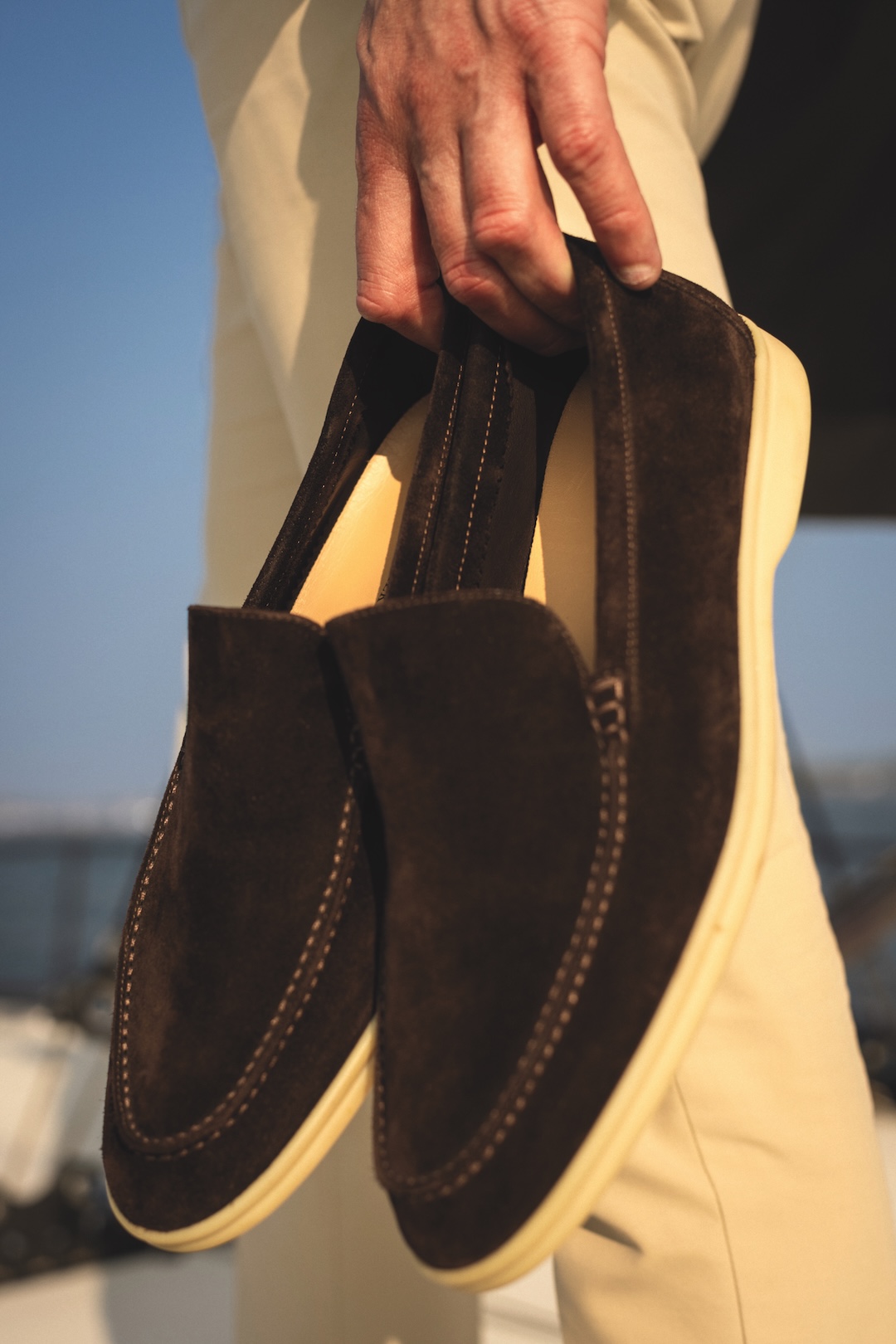
A Family Business Turned Global Powerhouse
The textile and clothing company that bears his family’s name was launched by an ancestor, Pietro Loro Piana, in 1924. A few generations later, Pier Luigi and his brother, Sergio, would run it for four decades until LVMH acquired a majority stake for around $4 billion in 2013. Sergio passed away that year; his widow and Pier Luigi still own a share of the brand between them.
The brothers proved innovative custodians, moving the company upmarket with an insistence on ultra-fine materials and groundbreaking fabrications. And the connection with sports—specifically yachting, horseback riding, skiing and golf—is integral to how the brand positions itself. As Pier Luigi recalls, such associations often had self-serving origins.
“These are the sports my brother and myself were doing,” he says. “We were very committed in business in the 1970s, ’80s, ’90s, so we were like our customers: people that like to work hard but also play hard. And that meant sports.”
Innovation Born of Necessity
This affinity often led them to develop durable, yet elegant, materials and gear for their off-duty pursuits, eventually offering versions to their athletic clientele. “We engineered products with unusual properties, natural fibres like wool or cashmere with a membrane that makes it waterproof and windproof… For research and development, I was the first victim,” he says with a chuckle. Once, he wanted a ski jacket that was “warmer, lighter, softer and better” than nylon models, so he made a prototype to test on the slopes. It gave birth to the Loro Piana Storm System, launched in 1994. The line’s wind-resistant waterproof wool and cashmere has since been used by brands around the world. “I still have this jacket,” he says.

The same process happened on the water. A beloved reversible bomber, with knitted cashmere on one side and waterproof polyester on the other, was born from Pier Luigi’s need for a functional jacket to wear on his yacht. “It’s very light, doesn’t wrinkle, it’s warm, windproof,” he says. “It solves so many problems.”
He takes less credit for perhaps the brand’s most famous—and almost certainly most imitated—product, the white-soled suede Summer Walk loafers. “That was my brother,” he says. “When we were 20, 30 years old, we went sailing and there were only [Sperry] Top-Siders or Sebagos. But when the soles got worn, they got hard and slippery.”
The answer: a non-marking sole with grip—“like a tire you use in Formula 1 when it’s wet”—which Sergio got his bespoke shoemaker to sew to suede uppers. Eventually, they produced two versions: a loafer and the Open Walk, a model with a slightly higher top. “We discovered people were using them also for formal wear because they were so comfortable,” says Pier Luigi. “It’s really a successful story that started from product research.”
And if problem-solving can turn your family business into a giant of global style, clearly it pays to be a little selfish.
You may also like.
The Supercar of Pool Tables
In a rare fusion of Italian design pedigree and artisanal craftsmanship, Pininfarina and Brandt have reframed the barroom game as aerodynamic high art.
In the rarefied realm where leisure meets design, the latest object of desire doesn’t purr down the autostrada—it commands the room from a single sculptural base. The Vici pool table, a collaboration between Italian automotive legend Pininfarina and Miami’s bespoke table-maker Brandt Design Studio, reimagines the game with the same aerodynamic poise and artisanal precision that have graced some of the world’s most beautiful vehicles.
Named for Julius Caesar’s immortal boast—“Veni, vidi, vici”—this limited-edition series transforms billiards from casual diversion into a declaration of style. Every curve is deliberate, from the ultra-thin playing surface clad in tournament-grade Simonis cloth to the seamless integration of Italian nubuck leather and precision-milled metals. The effect is more haute sculpture than barroom pastime—yet it meets exacting professional standards.
For the true connoisseur, the debut PF 95 Anniversario edition celebrates Pininfarina’s 95-year legacy in just 95 numbered pieces. Finished in dark-blue lacquer with rose-gold accents and a flash of red felt, each table is discreetly nameplated—a tangible claim to an heirloom in the making.
“It’s not just about how it plays—it’s about how it lives in a space,” says Dan Brandt, the master craftsman whose work has long graced the world’s most exclusive interiors. Whether anchoring a penthouse salon, a members’ lounge or the main deck of a superyacht, the Vici is designed to stir conversation before the first break.
For those accustomed to Pininfarina’s sleek automotive silhouettes, this is a chance to bring that same lineage of movement, form and Italian refinement into the home. Only now, the horsepower is measured not in engines—but in the geometry of a perfect shot.
From pool to midcentury to Ottoman, we’ve got all the table angles covered at Robb Report Australia & New Zealand —plus more home-worthy pieces.







